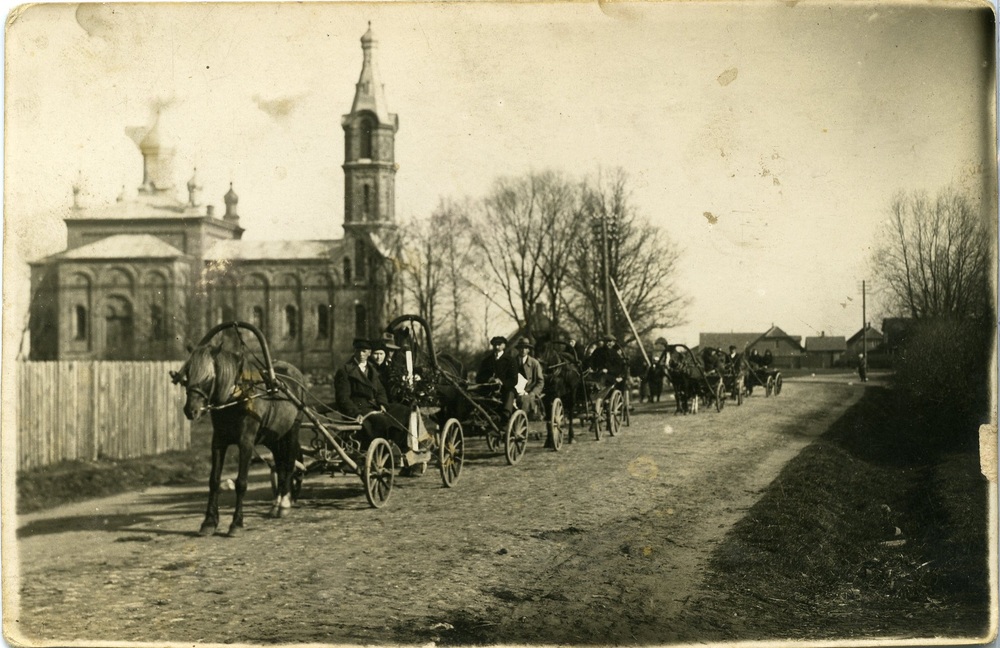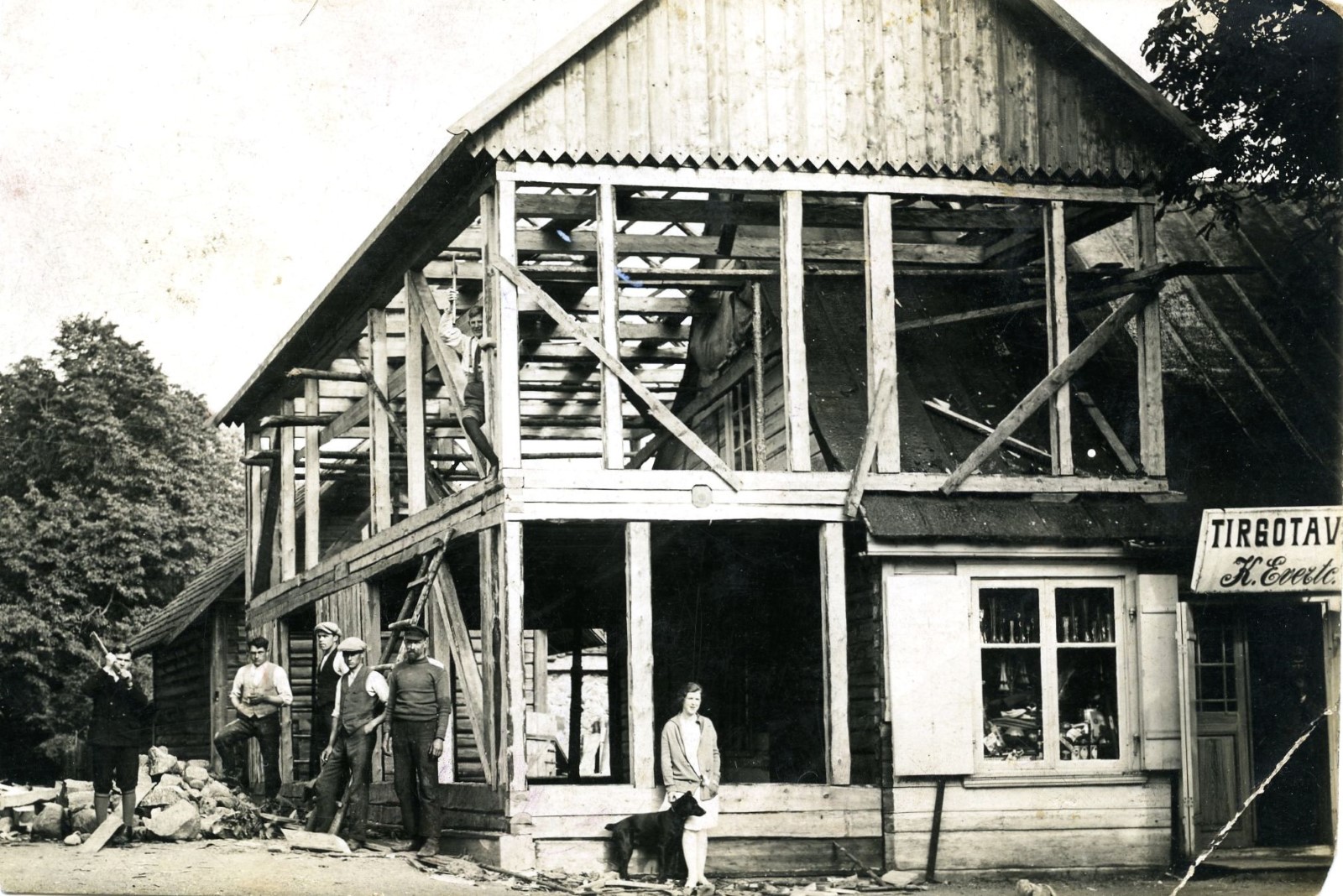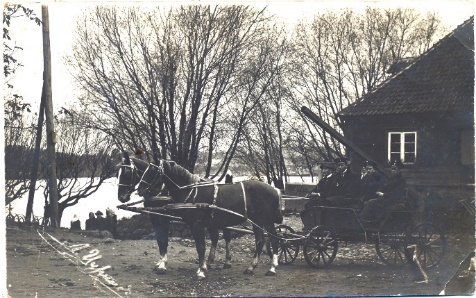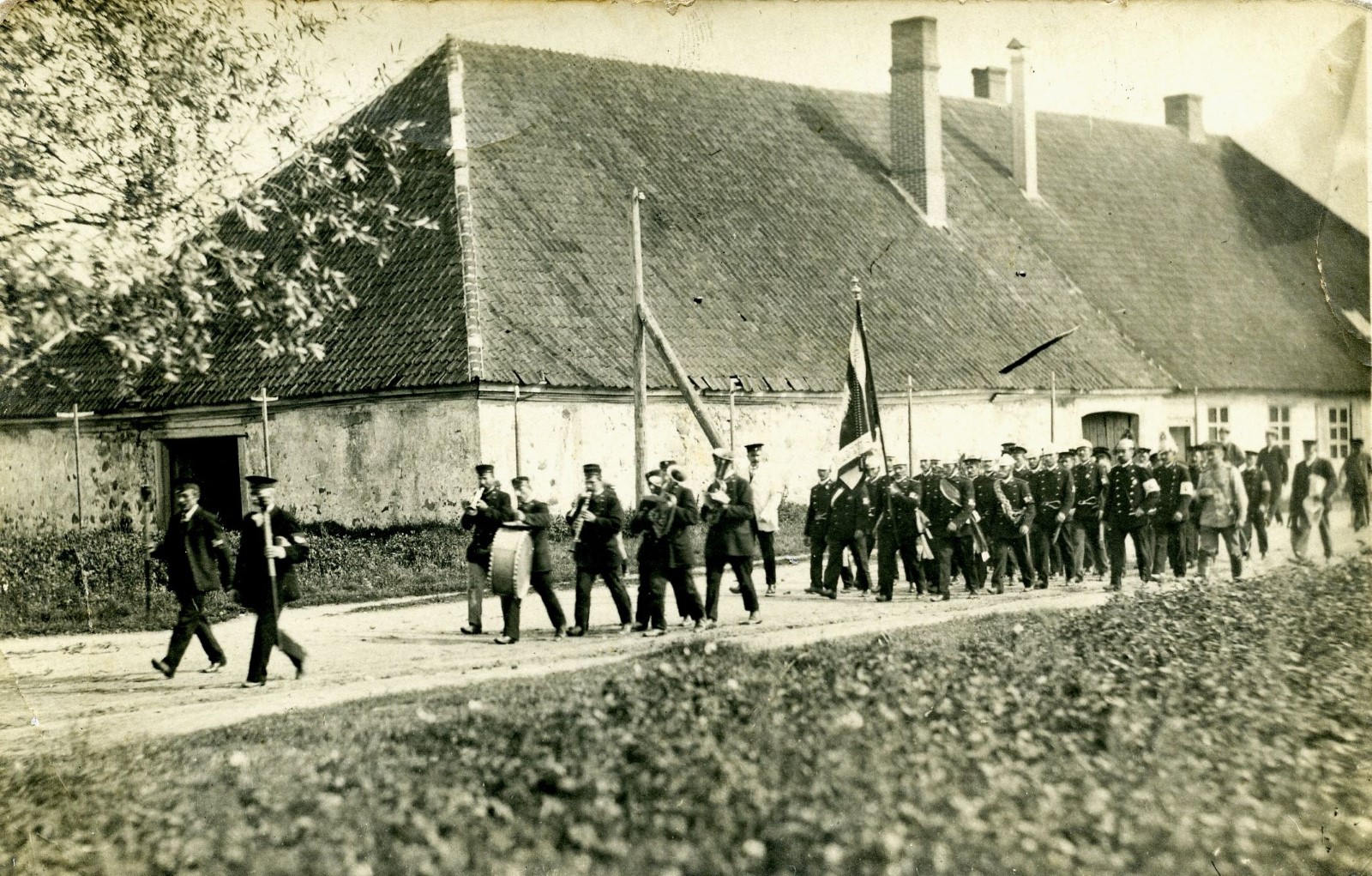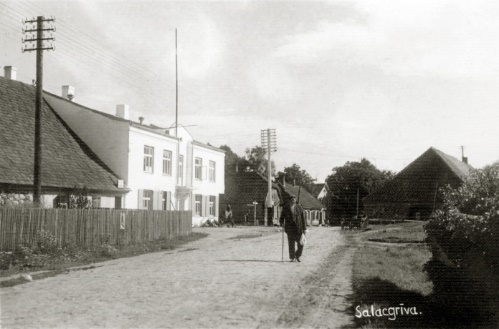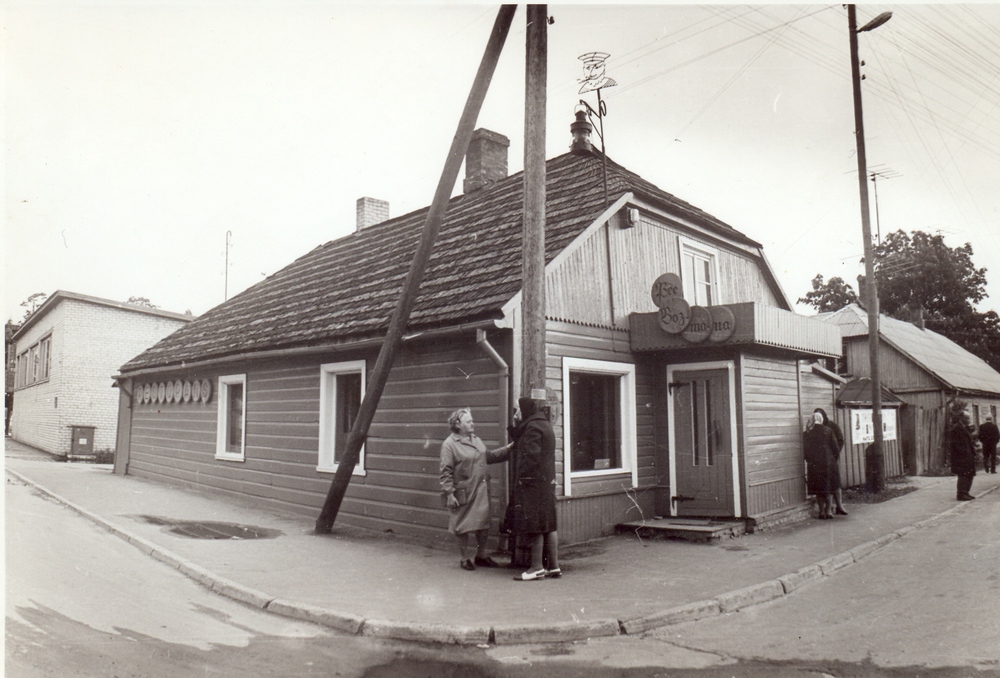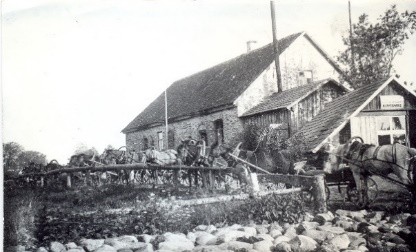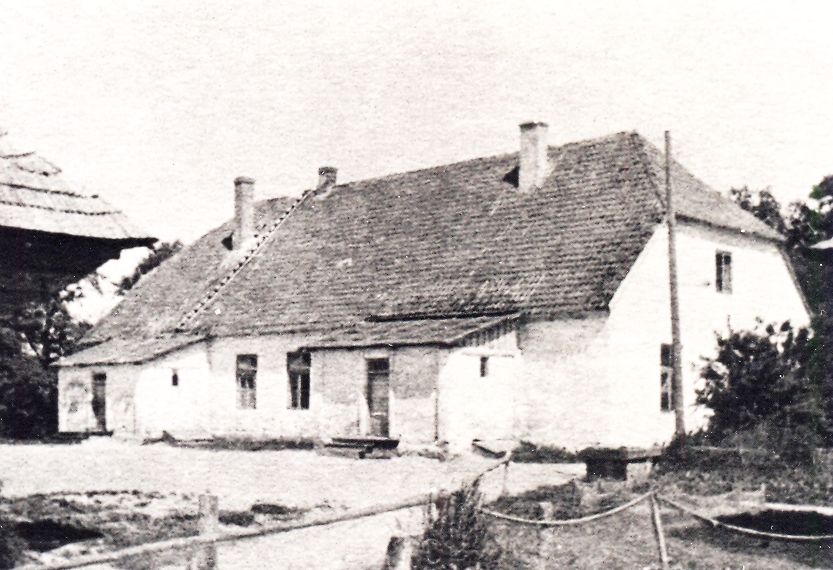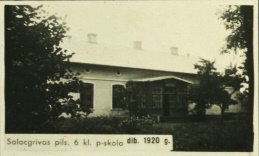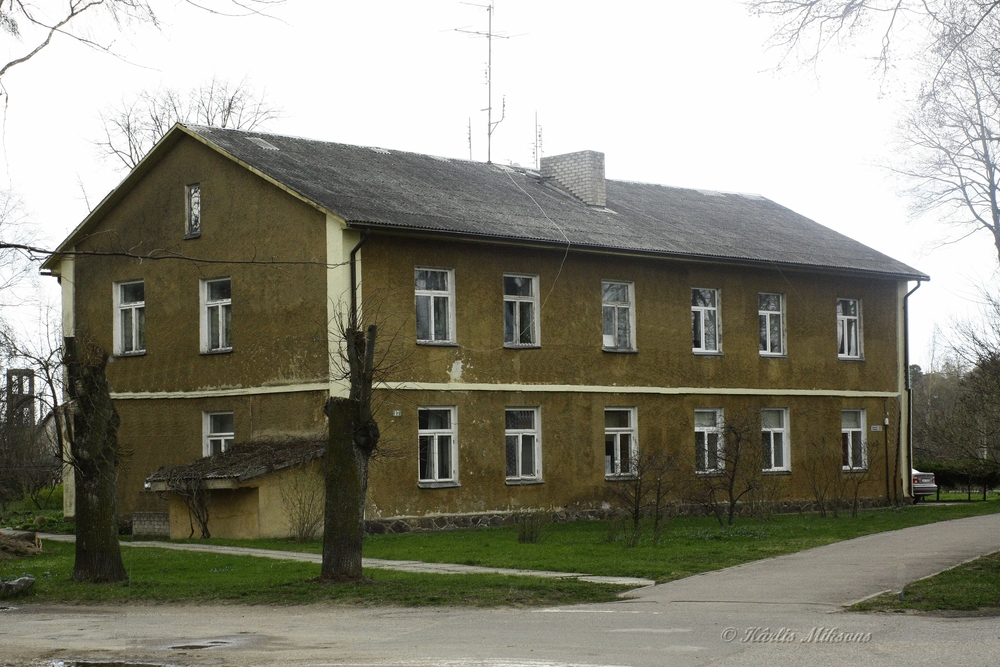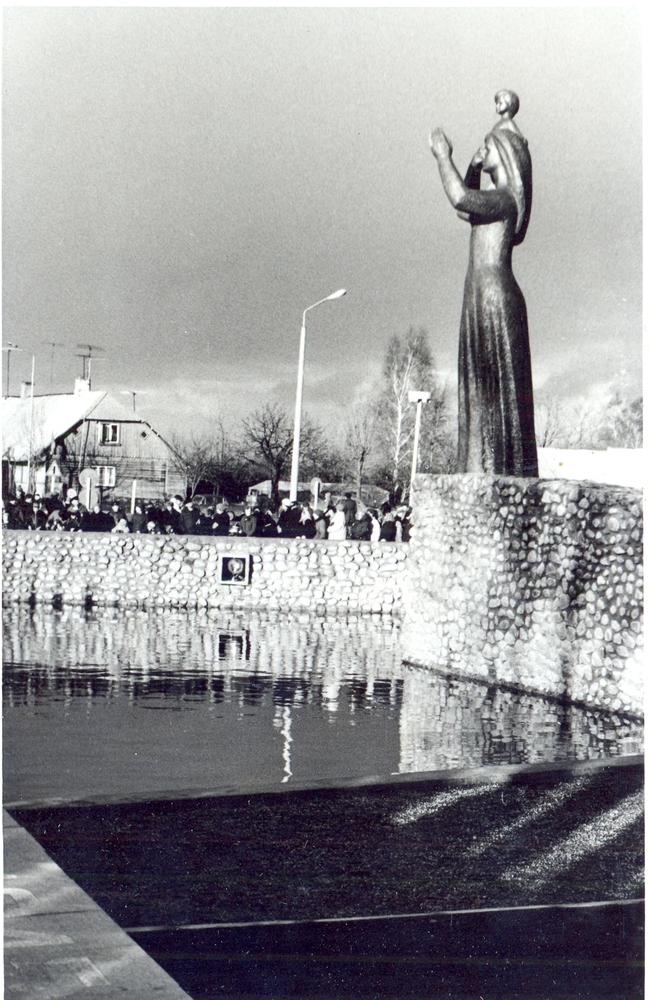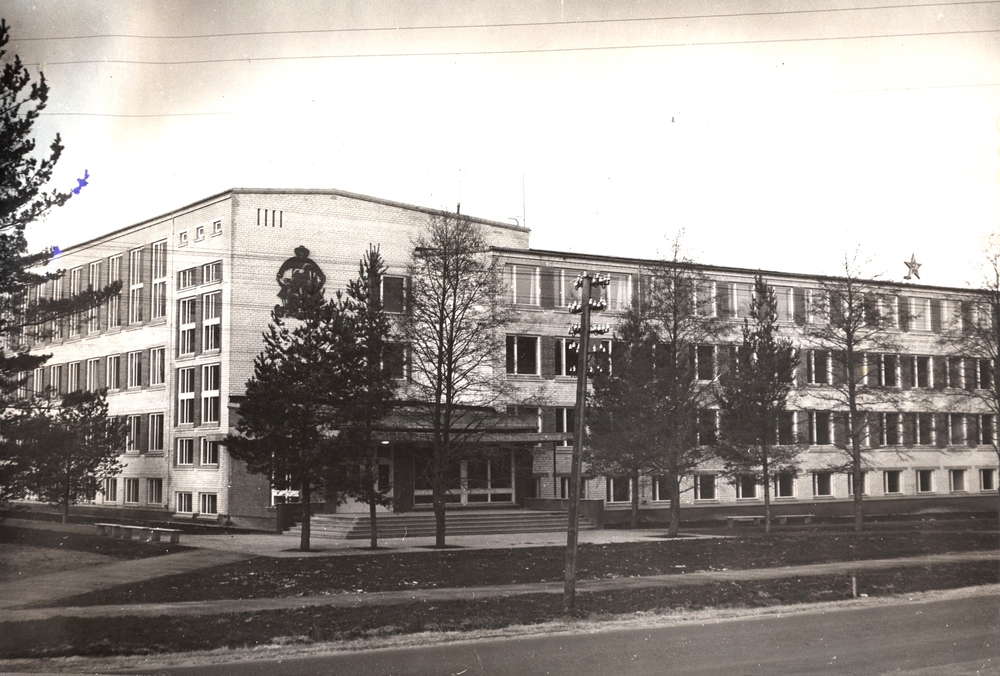Pernavas Street was the main street of Salacgriva right bank of the Salaca River up to World War II. It started at the ferriage on the right bank of the river and winding along Pikse Pub, Pale Pub, the buildings of elementary school and the Orthodox church went on as far as the border of the Salaca district with Ainazi.
The view of Pernavas street towards the river from the tower of the Orthodox church. Pale Pub on the left; in those times it belonged to the Salaca seashore fishermen's trade association. They had a lamprey baking house built in the north end of the building. Pikse Pub or a tavern on the right. In the foreground on the ground, in front of the building in a row, we can see lamprey traps (pot traps). 1920’s.
Pub or a tavern at 1 Pernavas Street next to the ferriage. 1920’s. Different tavern scenes of the movie Nauris were filmed by Riga Film Studio in Pikse Pub in 1957. Soon afterwards, the ancient building was demolished. Only the pub shed has been preserved.
The procession of the firefighters along Pernavas Street at Pale Pub. 1920’s. The Pale Pub is one of the most ancient buildings in the town. It can be seen in the drawing by J.C. Brotze of 1789. It is a single-storey building that has been preserved ever since the 18th century. It was rebuilt in 1930 when Irma Birzgale bought it from the Salaca seashore fishermen trade association.
The building of the Pale Pub after 1930. The south end of the building was rebuilt into a two-storey house where there was a shop; only the north end of the building retained its former ancient appearance with a low hip roof and thick stone walls. The new part of the pub hosted the Birzgals Grocery Store and the Mauritis Butchery.
This photo provides us a clear image of the new part of the Pale Pub or the Birzgals Grocery Store; in the background we can see a wooden building with a tile roof. It is not clearly known what was there in the first period of Latvian independence, but during the Soviet times and up to the year of 2015 a well-known restaurant At the boatswain functioned here.
Right in the front we can see Martin Pikse built hotel around 1939 at 3 Pernavas Street. During the Soviet times there was not only a hotel but also the so-called cultural goods store, where it was possible to buy both stationary and toys as well as sporting goods and household appliances. In the left corner right opposite the hotel there was a canteen that was popularly known as the "green frog", later it became a café At the boatswain. 1960’s.
A dairy house – a single-storey building with walls of stone and secure posts for tying horses. The dairy was opposite the Pale Pub but it was not at the side of the road, therefore there was enough space for a small store in the front. During the time when the photo was taken the owner of the store was K. Ampermanis later it was overtaken by Krauklis. 1920’s.
The building of the primary school at 5 Pernavas Street. It is possible that similar to the Pale Pub this can be the building that is depicted in J.C. Brotze drawing of 1780. The building was used for the needs of the school until 1963. Currently it is 11 Pernavas Street. 1960’s.
A building of a 6-grade elementary school that was built in tsar times as the apartment house for the border guard officer families. 7 Pernavas Street (Currently 17). The building is known to have been built by the State but the materials were provided by the baron Vegesack. The building was used for the needs of the school from 1920 to the first half of the 1960’s. After that it was reconstructed to be an apartment house. The half of the 1960’s.
In the post-war time a Heroes' Cemetery
was established on Pernavas Street; it is a resting place for the war dead in the Great Patriotic war. Each autumn on September 1, when the new school year started, all the students of Salacgriva Secondary School marched through the city and stopped at the Heroes' Cemetery to lay flowers there. Another story about how the soldiers became heroes in oral lore, though. Spending their time as no battle took place in Salacgriva, they broke into the building of Salacgriva pharmacy, stole the technical spirit and having drunk it, got poisoned thus they got to the cemetery.
The Heroes' Cemetery got a new, more monumental form in 1986. The author of the memorial is Leva Novozeneca and the architect is J. Petersons. Ever since Latvia regained independence, it has been called a World War II Memorial to honour the people who died during the war and to honour those people who lost their lives in the depth. Popularly – also known as the Salacgriva Milda. 1988.
